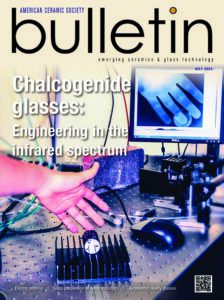
Julie Borchers is a Senior Research Scientist at the NIST Center for Neutron Research (NCNR). She serves as the Associate Director of the Center for High Resolution Neutron Scattering (CHRNS), which is a national user facility jointly sponsored by NSF and NCNR, and as an instrument scientist on the Polarized Beam Reflectometer. Her research focuses on determination of the magnetic and structural characteristics of systems (i.e., nanoparticles, multilayers, and devices) using diffraction techniques, including polarized neutron reflectivity, high-angle neutron diffraction, and small-angle neutron scattering (SANS). She has published more than 220 papers and twice was awarded the NIST Bronze Medal for her research in 1999 and 2011. She is also a Fellow of the American Physical Society (APS) and the Neutron Scattering Society of America. Through the years she has had the privilege of working with many members of the neutron and magnetism communities in volunteer roles including General Chair of the 2007 Joint MMM–Intermag Conference, Co-Treasurer of the 2018 International Conference on Magnetism (ICM), and Chair of GMAG in the American Physical Society. She served as Secretary of the NSSA from 1999 – 2002 and as Vice President of the NSSA from 2011 – 2015, and she was subsequently honored to receive the NSSA service award in 2004 and 2016. As a Co-Director of the CHRNS undergraduate and high school internship programs, she also has enjoyed working with the next generation of neutron scientists for many years.
Abstract: Advancing Nanomagnetism with Neutron Scattering
Neutron scattering has proven to be an exceptional in situ probe of magnetic materials since the advent of the technique. Near the end of the 20th century, innovations in materials fabrication enabled an explosion in engineered magnetic nanosystems, such as thin films, multilayer devices, and nanoparticles, that seeded transformational advances in areas ranging from magnetic sensing to cancer therapy. Simultaneous improvements in neutron instrumentation provided newfound means of using neutron scattering to unveil the inner workings of tiny nanomagnetic samples. For example, neutron studies of rare-earth superlattices revealed that RKKY interactions surprisingly propagate complex magnetic order across non-magnetic layers. This phenomenon provided the basis for understanding giant magnetoresistance (GMR) in metallic multilayers, the discovery of which led to unprecedented innovations in magnetic storage and to the 2007 Nobel Prize. Magnetic computing technologies subsequently benefited from neutron studies of actual GMR systems and of exchange-biased pinning in sensors. Concurrently, SANS polarization analysis proved to be uniquely well-suited for characterizing magnetic nanoparticles for computing and biomedicine. Building on this foundation, current neutron research in nanomagnetism encompasses topics from skyrmions to topological insulators. I express my appreciation to the many collaborators who enabled this exciting journey.
Subscribe to Ceramic Tech Today

Don’t miss the latest ceramic and glass materials news. Receive the CTT newsletter to your email three times a week by subscribing at this link.
Subscribe to Ceramic & Glass Manufacturing Weekly

Don’t miss the latest ceramic and glass business news. Receive the C&GM Weekly newsletter to your email every Monday by subscribing at this link.


